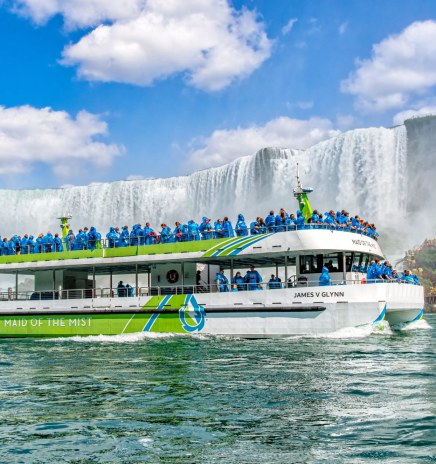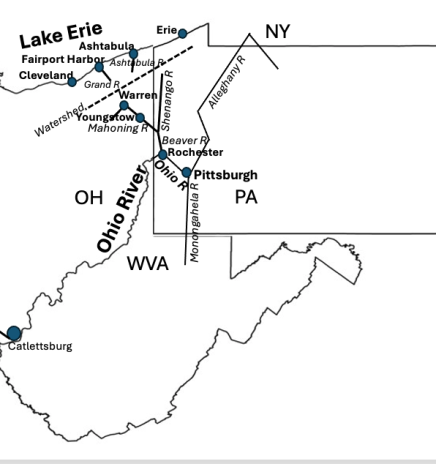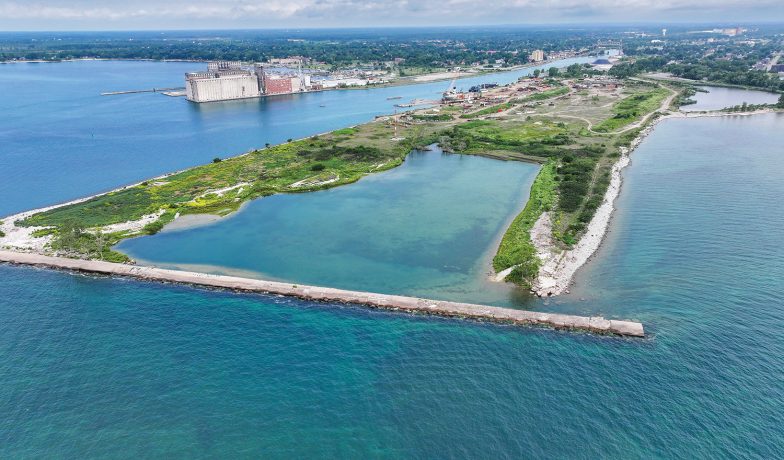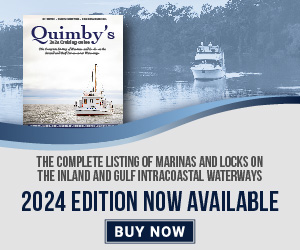Building a Resilient Network
Ontario starts big push for maritime operations
Efforts are underway to expand Ontario’s maritime sector over the next 10 years. The province of Ontario announced a new marine transportation strategy at the Great Lakes St. Lawrence Governors & Premiers 40th anniversary summit in Cleveland, Ohio, in October. The strategy is known as “The Future of the Great Lakes Economy: Ontario’s Marine Transportation Strategy 2023.”
In an opening message during the summit, Prabmeet Singh Sarkaria, Ontario’s Minister of Transportation, stated that the strategy will keep goods and people moving through the system and is a critical step toward strengthening the overall economy. “The marine sector is a critical component of Ontario’s robust transportation system that links to our railway and trucking networks,” he stated.
Four Central “Pillars”
Multimodal transport is one of four central Pillars:
- Pillar 1 – Strengthening maritime’s position in the multimodal network;
- Pillar 2 – Supporting infrastructure and economic development;
- Pillar 3 – Investing in education, labor and training; and,
- Pillar 4 – Greening marine transportation.
To advance work in these areas Ontario will:
- Initiate a new effort to build out a “resilient sector and strengthened relationships with private and public partners.” This will include advocating for marine sector priorities and establishing a new office – the Ontario Marine Partnership and Development Office.
- Strengthen connections between maritime and other transport modes, seeking both efficiencies and the “greening of the broader transportation sector.”
- Focus on workforce development so that transportation businesses have access to a “strong, skilled and diverse labor pool.”
- Strengthening Provincial ferry service.
- Advancing decarbonization while allowing for sustainable business growth.
The strategy’s focus is on connections with international waterways and does not include recreational and leisure waterways.
Coordinating Governments
To start, Ontario officials will establish an Ontario Marine Partnership and Development Office, which will work to streamline coordination among parties, foster engagement with industry partners, and advocate on behalf of the province to advance maritime priorities. The strategy seeks a “strategic inter-governmental engagement and awareness plan” with the province’s “federal and provincial government counterparts.” Ontario officials hope to establish a “centralized ‘one-window’ provincial support for the marine sector.”
Also upcoming is a provincewide “multimodal strategic goods movement network” to enhance intermodal integration and infrastructure. The network will include regional multimodal freight nodes, including marine ports. The strategy expects this network will leverage and optimize the strengths of each transportation mode.
Economic Incentives
In expanding on its 2nd Pillar – infrastructure and economic development – the strategy stated that:
“Ontario is committed to exploring financial incentives for the shipbuilding industry in Ontario that support the needs of the province’s shipbuilders to ensure we are positioned as competitive leaders in the industry. This commitment focuses on building and repairing ships as well as maintaining competitiveness, creating jobs and growing the economy.”
More broadly, these potential payments would be linked to investments in new and improved maritime and landside infrastructure, projects that would increase a shipyard’s capacity, for example, because the yard’s work provided the assets that kept people and goods moving. The strategy noted Ontario’s robust shipbuilding and repair industries. In 2022, these sectors generated C$52.8 million in GDP and approximately 935 jobs. The yards are engaged in federal shipbuilding programs, including the Polar Icebreaker and search-and-rescue vessels for the Canadian Coast Guard, as well as repair, refit and refurbishment projects. In addition, the strategy noted commercial vessel production in Ontario. These investments provide public benefits and warrant public support.
Workforce Development
The strategy stated that to support “the longevity and sustainability of the marine industry” Ontario will “look to enhance and expand education, labor and training opportunities.” One focus will be on initiatives with a “positive impact” on Indigenous partners and “other equity-seeking groups.”
Upcoming action steps could include:
- Working with educational partners through “Level Up!” skilled trades career fairs. (Level Up! is sponsored by Ontario. It presents career fairs to promote 140 skilled trades to students in grades 7 to 12.)
- Promoting apprenticeship opportunities such as the Specialist High Skills Major program and the Ontario Youth Apprenticeship Program.
- Supporting marine focused micro-credential programs which provide rapid skills training for in-demand jobs.
- Expanding co-op programs.
The strategy also highlights recent workforce development investments. In July 2023, Ontario announced more than C$3.7 million in funding to help train 300 shipyard workers in Hamilton and Port Weller. In May 2022 Ontario provided C$8.7 million to launch the Ontario Shipyard Modernization Project at Heddle Shipyards (now Ontario Shipyards).
Who’s at the Table?
There are many partnerships involved in moving this initiative forward. Mayors from Port Colborne, St. Catharines and Thorold helped develop the strategy, along with professional staff from Sault Ste. Marie, Welland, the county of Frontenac, the regional municipality of Niagara, town of Midland and the township of Frontenac Islands.
Tanya Blazina, who is on the media relations team for the Ministry of Transportation, said that “key actions” in 2024 will focus on provincial ferry services and establishing the Partnership/Development Office, but she did not highlight any legislative or budget or policy moves or whether staffing or hiring are necessary or has started. She said that key implementation efforts are already underway and will continue throughout 2024.
Blazina also said marine transportation is critical for some Indigenous communities. “Indigenous communities have a vested interest in environmental protection and the impact of the marine sector on the natural environment, as well as in ensuring access to economic opportunities for Indigenous people and communities,” she added.
Ports and Maritime Interests
Several ports and business associations also worked on the strategy, including Steve Salmons, president and CEO of the Windsor Port Authority and chair of the Ontario Marine Council.
Salmons said Port Windsor’s top priority is advancing short sea shipping, particularly Great Lakes container shipping. Salmons suggested that Ontario could capitalize on its major investments in the Herb Gray Parkway and the Gordie Howe International Bridge to create a multi-modal hub.
Salmon said this initial strategic plan “recognizes the importance of resiliency and capacity of Ontario’s supply chain,” that it will strengthen Ontario’s maritime sector as an essential link in industrial and transportation policies.
Meanwhile, the Great Lakes and St. Lawrence Cities Initiative (CI), a binational coalition of municipal and regional U.S. and Canadian mayors and local officials, is supporting the creation of the strategy after calling on Ontario officials to establish a plan back in 2022. Phillipe Murphy-Rhéaume, senior director of membership and development at CI, said the strategy is a “significant step in building up an industry that contributes C$9.6 billion in economic value.” He added that it will bolster similar initiatives getting started elsewhere, in Canada and the United States.
In 2024 Murphy-Rheaume said his group will work to focus on incorporating and aligning the Strategy with a 10-year “economic transformation” plan CI is developing, to be presented at a conference next year. He said the CI supports the new Partnership/Development Office, that it will likely “play a key role in fostering intra- and inter-governmental collaboration to bolster the success of Ontario’s Strategy and serve as an internal champion to keep this key industry top of mind.”
Larissa Fenn, vice president of Corporate Affairs at the Hamilton-Ontario Port Authority (HOPA Ports) said HOPA Ports fully supports the strategy. “We are thrilled that Ontario is taking a greater interest in the role marine transport can play in growing our economy, preserving our industrial strength and fighting climate change,” she said.
Fenn thinks the strategy will set the stage for new short sea and inter-lake marine services. Plus, it could help remove truck traffic from congested highways in southern Ontario.
PortsToronto also participated in the strategy’s development. Jessica Pellerin, manager of media relations and public affairs for PortsToronto said its top priorities for 2024 include:
- Seafarer training;
- Short sea shipping;
- Port infrastructure investments in dockwalls and bridges, e.g., the project with the City of Toronto to rehab the Ship Channel Lift Bridge;
- Support for tourism.
As the strategy moves forward, these partnerships between Ontario stakeholders couldn’t be more important. Pellerin noted that PortToronto was visited by a record 45 ships and 18,000 passengers in 2023. These travel impacts reach way beyond Toronto, extending across the Great Lakes and into northern Ontario.

Ferries Could Provide Early Lessons on Electrification
In July, the Great Lakes St. Lawrence Governors & Premiers (GSGP) released a new study on vessel electrification titled “Ferry Electrification in the Great Lakes St. Lawrence Maritime Transportation System.” ... Read More

Expanding Great Lakes Trade
The Ohio River flows within 100 miles of Lake Erie in northeast Ohio. Connecting the river and lake with a canal would facilitate trade between Great Lakes ports and numerous... Read More



